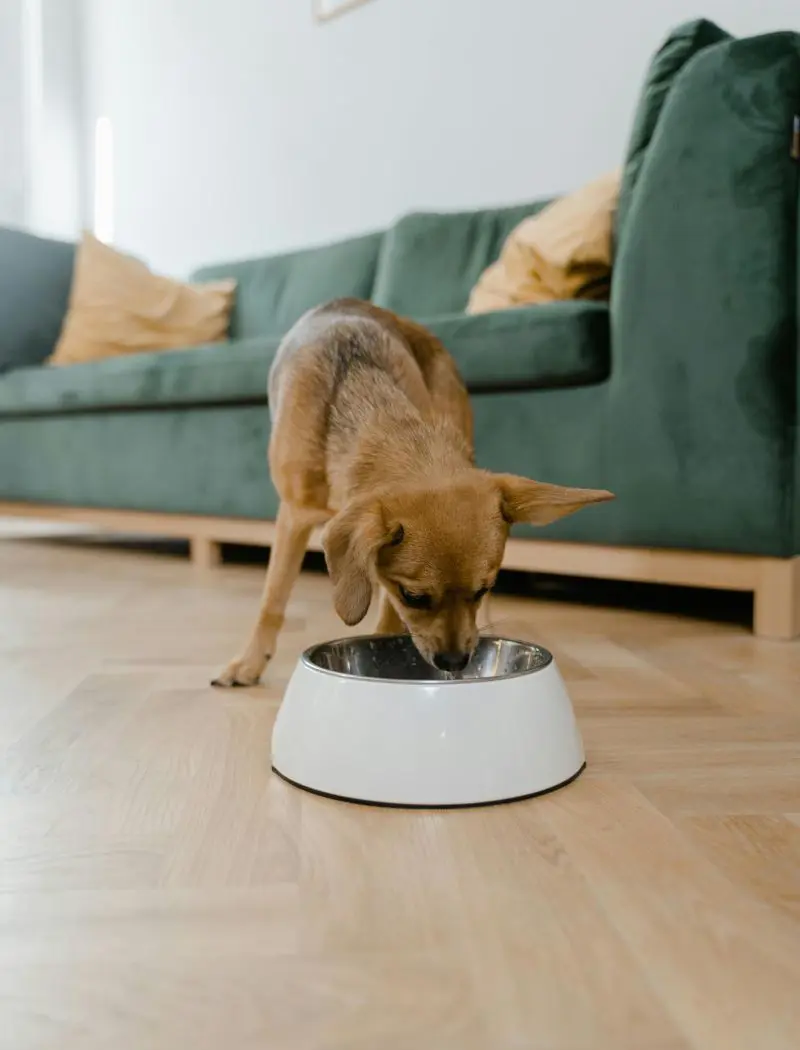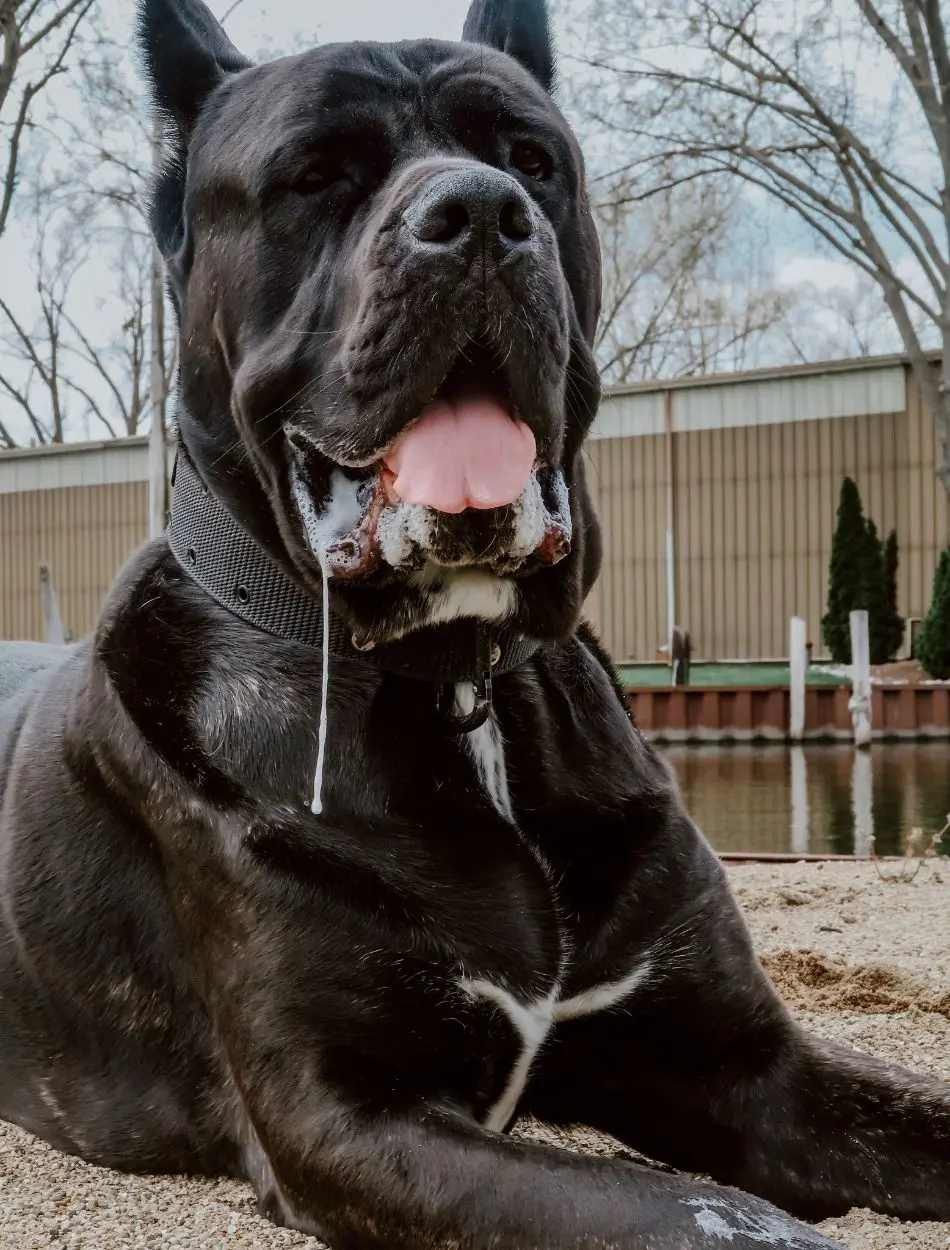Puppy Teething: Stages, Symptoms And Solution
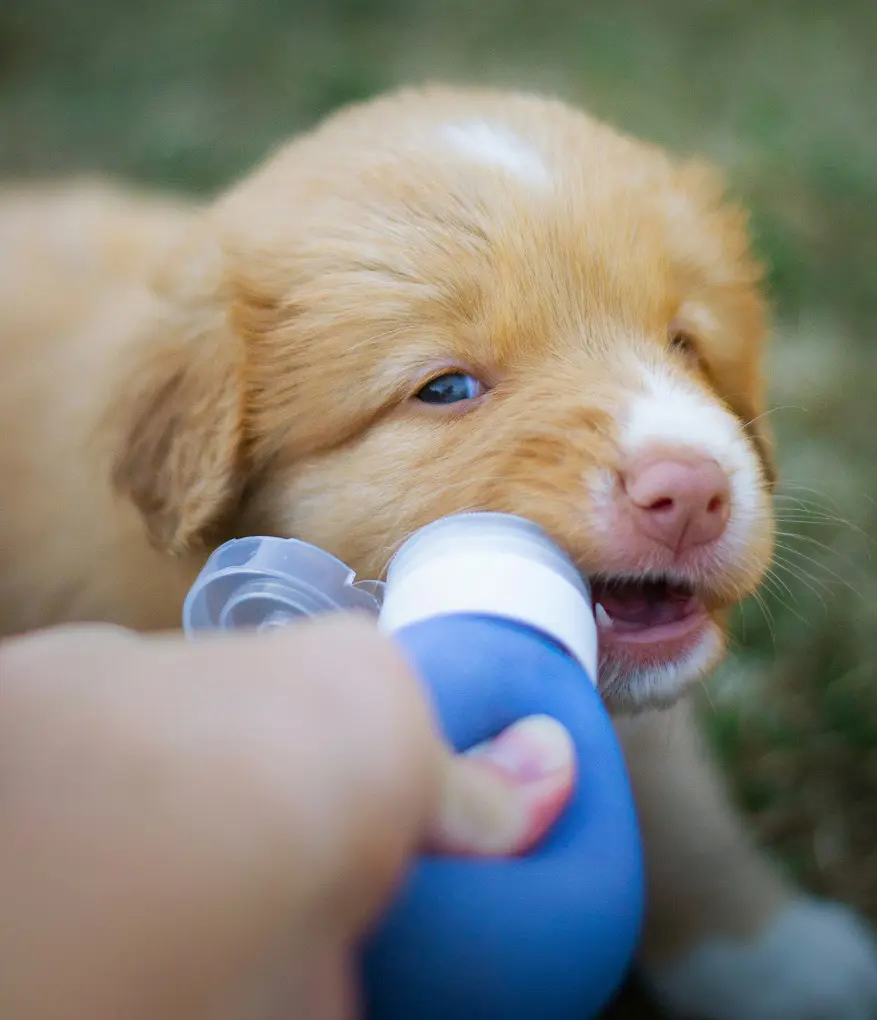
Every puppy goes through the important developmental stage of puppy teething, which usually begins at three weeks and lasts until the dog is about six months old. Your pet will be in great discomfort during this time as their baby teeth erupt and their adult teeth appear.
Knowing the signs and phases of teething can assist pet owners in giving their puppies the support and care they need to minimize discomfort and promote good dental development.
Understanding Puppy Teething
Puppy teething is a developmental phase marked by discomfort as baby teeth erupt and are subsequently replaced by adult teeth.
Beginning around three weeks of age and concluding approximately six months later, this period is characterized by symptoms such as excessive drooling, swollen gums, irritability, and decreased appetite. To alleviate discomfort, puppies instinctively chew on various objects.
Owners can provide relief by offering appropriate chew toys and cold treats, and maintaining optimal oral hygiene. Ensuring a balanced diet supports healthy tooth development.
Regular veterinary examinations are crucial to monitor dental progress and address any potential issues, ultimately promoting lifelong oral health.
Teething Stages
Puppies undergo a teething process characterized by the eruption of 28 deciduous teeth, accompanied by gum discomfort. To relieve this irritation, puppies often exhibit destructive chewing behaviors, targeting household items such as baseboards and footwear.
Birth to 2 Weeks
Newborn puppies are born without teeth and entirely reliant on their mother for sustenance. The initial two weeks of life are marked by rapid development as puppies acclimate to their environment.
During this period, puppies primarily nurse and gradually begin to open their eyes, signifying a crucial milestone in their sensory development. This neonatal stage is characterized by vulnerability and rapid growth as the puppies prepare for the subsequent phases of life.
Week 2 to 4

A puppy's dental development commences rapidly in the initial weeks of life. Between the ages of two and three weeks, incisors, the narrow-edged teeth positioned at the front of the mouth, begin to emerge. Puppies possess six incisors on both the upper and lower jaws.
Concurrently, at approximately three to six weeks of age, premolars and molars, situated behind the canines, start to develop. Each side of the upper and lower jaws will eventually house three premolars and molars.
The distinctive canines, characterized by their pointed shape, make their appearance at four weeks of age, flanking the incisors with one canine on each side of the upper and lower jaws.
Weeks 5 to 8
The initial stages of dental development occur between the fifth and eighth weeks of a puppy's life. During this period, the complete set of 28 deciduous, or "milk," teeth emerges. Concurrently, the foundation for the permanent dentition is laid as the underlying roots of these temporary teeth begin to dissolve.
Typically, these milk teeth naturally fall out as the permanent teeth erupt. Persistent milk teeth can hinder the proper alignment of the permanent set, potentially leading to difficulties with chewing, increased susceptibility to dental diseases, and subsequent gum infections.
As the puppy's dentition matures, their dietary needs evolve to accommodate firmer food textures, transitioning from primarily soft puppy food to a more substantial diet.
Weeks 12 to 16
The typical transition of puppies to their new homes occurs at approximately eight weeks of age. During this period, the process of shedding deciduous teeth and the subsequent emergence of permanent dentition commences.
This phase is often accompanied by discomfort for the puppy, necessitating the provision of suitable teething toys.
Concurrently, this developmental stage presents an optimal opportunity to enhance socialization efforts, introduce oral examinations, and establish a foundation for dental hygiene practices, including teeth brushing.
6 Months and Older
By the age of six months, a puppy's deciduous teeth should have been fully replaced by their permanent set. Any residual baby teeth necessitate veterinary intervention for removal.
Adult dentition comprises a total of 42 teeth, an increase of four premolars and ten molars compared to the puppy set. This complete set of permanent teeth typically develops within approximately seven months, marking the conclusion of the teething process.
Symptoms of Puppy Teething
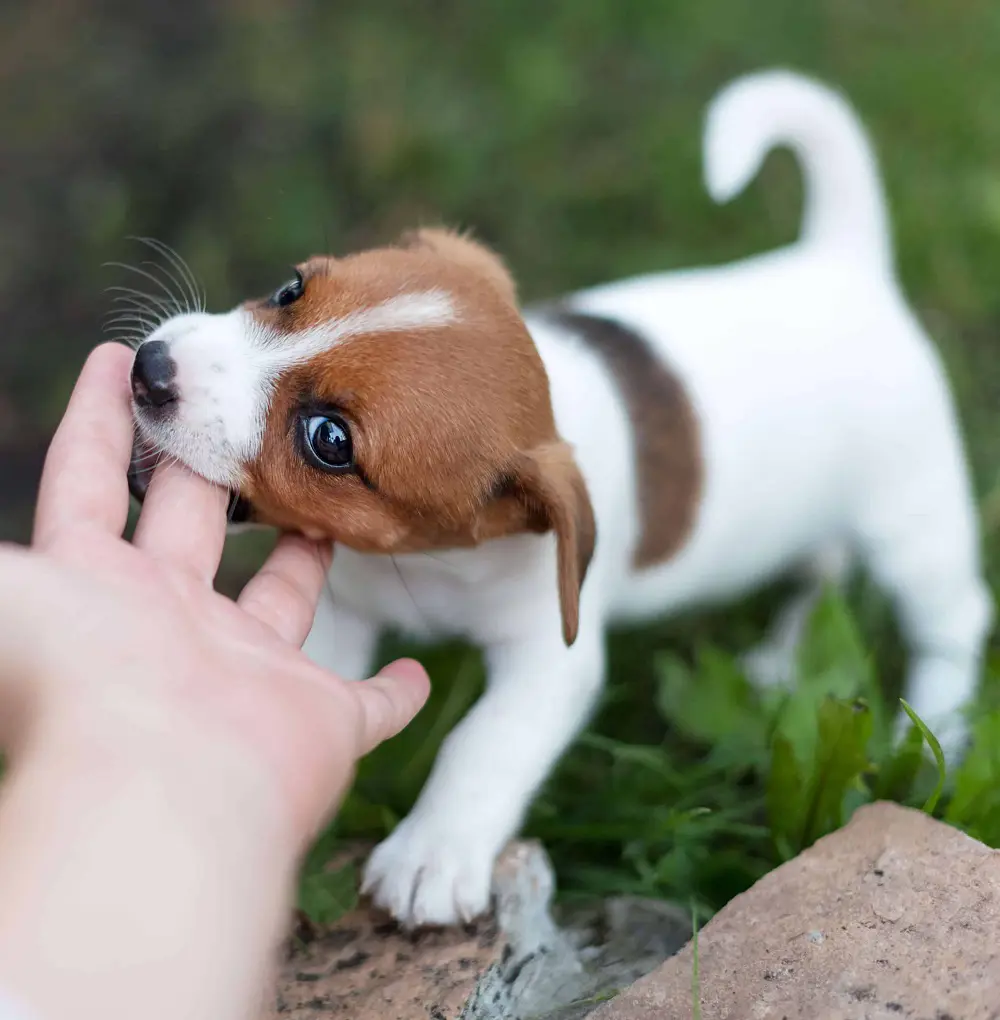
Teething is not complicated to determine. The following typical puppy teething symptoms may signify your dog's adult teeth are on their way:
1. Increased Chewing: Puppies instinctively chew on various objects to relieve the discomfort of teething. This behavior is a natural response to the pressure and pain caused by new teeth emerging through the gums.
2. Drooling: Teething often leads to excessive drooling as puppies' gums become sensitive and inflamed. You may notice your puppy's mouth being wetter than usual or see wet spots where they've been lying down.
3. Swollen Gums: Inflamed and swollen gums are a common symptom of teething. Gums may appear red and feel tender to the touch. This can cause significant discomfort for the puppy.
4. Irritability and Restlessness: The pain and discomfort associated with teething can make puppies more irritable and restless. They might have trouble sleeping and may whine or cry more frequently.
5. Loss of Appetite: Sore gums can make eating uncomfortable, leading to a reduced appetite. Puppies might be reluctant to eat hard kibble and prefer softer foods during teething periods.
6. Mild Fever: Some puppies may experience a slight increase in body temperature due to the inflammation in their gums. However, a high fever should be checked by a veterinarian, as it might indicate an infection.
7. Behavioral Changes: Teething can cause temporary changes in a puppy's behavior. They might become more clingy, seek comfort from their owners, or exhibit signs of anxiety.
8. Visible Tooth Loss: You may find baby teeth around the house as they fall out to make room for adult teeth, as this is a normal part of the teething process and indicates that your puppy is progressing through the stages of dental development.
Solutions for Teething Puppies
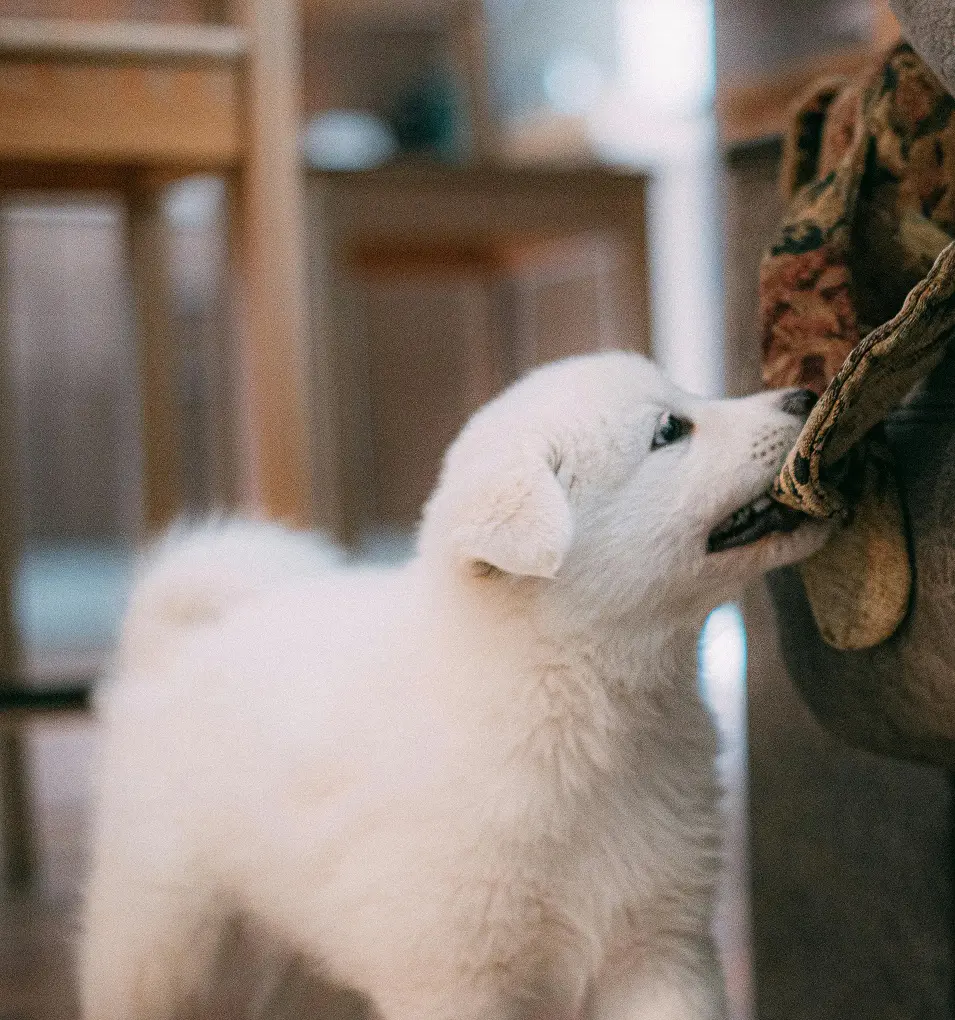
Puppies usually go through a common phase called teething, which lasts from approximately 3 to 4 months to about 6 or 7 months. Puppies may chew on different objects to ease their discomfort during this period. The following are some remedies to ease teething puppies:
Durable Rubber Toys
Taking good care of your puppy's discomfort during teething is essential. Getting sturdy rubber toys is a major step in easing this stage. High-grade rubber toys, like those from Kong, can endure the rigors of a teething puppy's jaws while offering much-needed respite.
By providing a secure and enjoyable chewing outlet, these toys protect furniture from damage and promote the general well-being of the puppy.
Nylon Bones
A good option for puppies who are teething is nylon bones. These chew toys, which are made especially for this formative stage, give a puppy's need to gnaw a sturdy and secure outlet. Nylon bones have a texture that promotes good chewing habits while relieving discomfort and sore gums.
By rerouting harmful chewing toward these special chew toys, owners may safeguard their possessions and give their puppies a suitable and fulfilling way to relieve discomfort associated with teething.
Freezable Toys
Freezable toys offer a practical and effective solution to alleviate the discomfort associated with teething in puppies. The cold sensation provided by frozen toys numbs sore gums, providing much-needed relief.
These toys are often made from durable materials designed to withstand vigorous chewing, ensuring the puppy's safety while they indulges in this instinct.
By offering a suitable and satisfying chew item, owners can redirect their puppy's attention away from household objects, protecting belongings from damage. It is essential to supervise the puppy while using any chew toy to prevent potential accidents.
Rope Toys
Rope toys can offer substantial relief and oral stimulation for teething puppies. The textured surface of rope toys can help clean teeth as puppies chew, promoting dental hygiene.
Additionally, the act of chewing on a rope toy can provide a satisfying sensory experience, helping to alleviate discomfort associated with teething.
Rope toys should be selected carefully to ensure they are appropriate for the puppy's size and chewing strength, and supervision during playtime is essential to prevent accidental ingestion of rope fibers.
Frozen Wash Cloth
Teething is a normal developmental stage for puppies characterized by gum discomfort as adult teeth erupt. To alleviate this distress, consider providing a frozen washcloth. Dampen a washcloth, twist it, and freeze it.
The cold temperature can numb sore gums, providing temporary relief. Supervise your puppy while using the washcloth to prevent choking hazards.
Frozen Carrots
Frozen carrots offer a natural and effective solution for teething puppies. The cold temperature provides soothing relief to inflamed gums, while the firm texture facilitates healthy chewing. This nutritious treat not only alleviates discomfort but also promotes dental hygiene.
Carrots should be thoroughly washed and frozen before offering them to your puppy, ensuring a safe and enjoyable experience.
While frozen carrots can be beneficial, it is essential to monitor your puppy closely during this period and consult with a veterinarian for any persistent discomfort or abnormal behavior.
Redirection
Teething is a normal developmental phase characterized by discomfort as new teeth erupt. To mitigate destructive chewing behaviors often associated with this period, owners should employ redirection techniques.
When a puppy exhibits chewing on inappropriate items, such as furniture or personal belongings, it is essential to promptly divert their attention to a suitable chew toy. Consistent positive reinforcement, such as verbal praise or treats, should be administered when the puppy engages with the designated chew toy.
This conditioning process helps to establish the chew toy as a preferred and acceptable chewing object, thereby safeguarding household items from damage while providing the puppy with an appropriate outlet for their teething discomfort.
Massage Gums
Teething is a normal developmental stage for puppies characterized by discomfort and irritation as adult teeth begin to emerge. To provide temporary relief, gentle gum massage can be administered.
By carefully massaging the puppy's gums with clean fingers, owners can soothe inflammation and reduce teething-related distress. This method offers a non-invasive approach to alleviate discomfort during this challenging period.
Edible Chews
A typical developmental stage that involves gnawing and discomfort is teething. Having the right chew toys on hand is crucial for symptom relief and asset protection. Providing a range of textures, such as rubber, soft, and sturdy alternatives, can accommodate a puppy's inclinations.
Chilling toys can also help relieve the discomfort of irritated gums. Puppies’ dental chews can help with dental hygiene and ease the discomfort associated with teething.
To avoid mishaps and reroute chewing habits toward appropriate objects, playtime needs to be closely monitored. This process can be further aided by providing consistent positive feedback for healthy chewing patterns.
Preventing Destructive Chewing

In pups and young dogs, destructive chewing is a common behavioral problem. Owners must provide their pets with lots of mental and physical stimulation to lessen this. To exhaust their dog and redirect their energy constructively, regular exercise, engaging play, and training sessions are essential.
It is crucial to guarantee that suitable chew toys are available. Destructive conduct can be discouraged by providing a range of textures and interesting possibilities. It's critical to control the surroundings by putting away enticing objects and designating specific locations for chewing.
Desired behaviors can be reinforced while chewing on appropriate things with consistent redirection and positive rewards. Also, training and contextual enrichment can greatly lessen destructive chewing habits by addressing underlying causes like boredom or anxiety.
Long-term Dental Care for Dogs

For dogs' general health and well-being, long-term dental care is crucial. Regular brushing with toothpaste that is safe for dogs helps stop gum disease and plaque accumulation. Providing toys and dental chews with tartar-reducing properties can help promote good oral care.
Regular veterinary examinations, which include cleanings by professionals, are essential for spotting and treating dental problems early on. In addition, a diet rich in foods that are good for your teeth and gums can be balanced.
It's crucial to keep an eye out for any indication of dental issues in your dog, such as foul breath, excessive drooling, or trouble eating, and to consult a vet if necessary. Regular dental care helps your dog live a longer, happier life by preventing more serious health issues in addition to maintaining good oral health.
Recent posts
Dogs
Why Is My Dog Panting? 18 Reasons For Breathing Fast
Dog owners, those in tune with their pets, can often notice a change in their companion’s behavior. When unwell or scared, some dogs hide while others seek solitude. Similarly, panting is a normal sign of tiredness or lethargy, but can also imp...
10 Reasons Behind Dogs Chewing And Licking Their Paws
Some of the most harmless behaviors dogs depict are chewing on their paws. But if this obsession catches onto your pup, well, that raises a couple of curious eyebrows. Your dog's tendency towards chewing and licking can affect general health and well...
18 Reasons Why Your Dog Is Not Eating
A skipped meal here or there is normal, but your dog consistently refusing food is the cause of concern. The reasons range from dietary issues to more serious health conditions and behavioral issues. The dog may be a picky eater or there might be som...
17 Causes Of Seizures In Dogs
Don't dismiss your pet dog's uncontrolled twitching movements as harmless shivering - you may be bearing witness to the classic signs of a seizure. These sudden and involuntary electrical disturbances can drastically impact a dog's health and even ch...
18 Reasons Why Your Dog Is Drooling So Much
While drooling in dogs is perfectly normal in certain situations, excessive or continued drooling may hint at a more serious issue that requires attention. Once you know the probable causes of this drooling in your dog, you can take some necessary st...
18 Reasons On Why Is My Dog Limping
A dog limping can be a cause of concern and cause stress to owners. It is not normal dog behavior and can be a sign of health problems in dogs. Understanding why your dog is limping is important to cure this problem. This article discusses 18 reasons...


